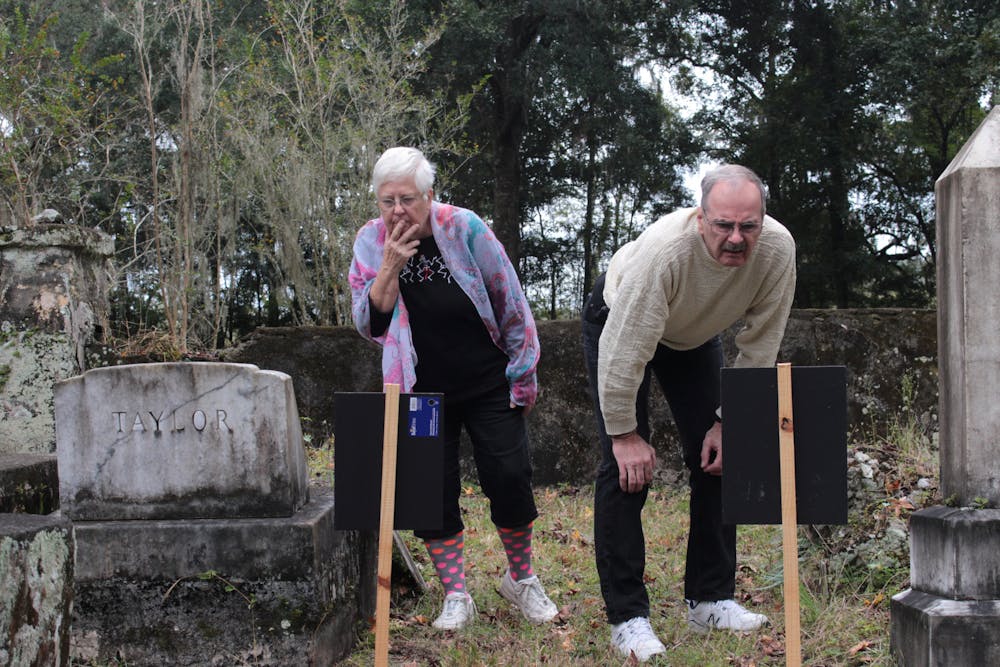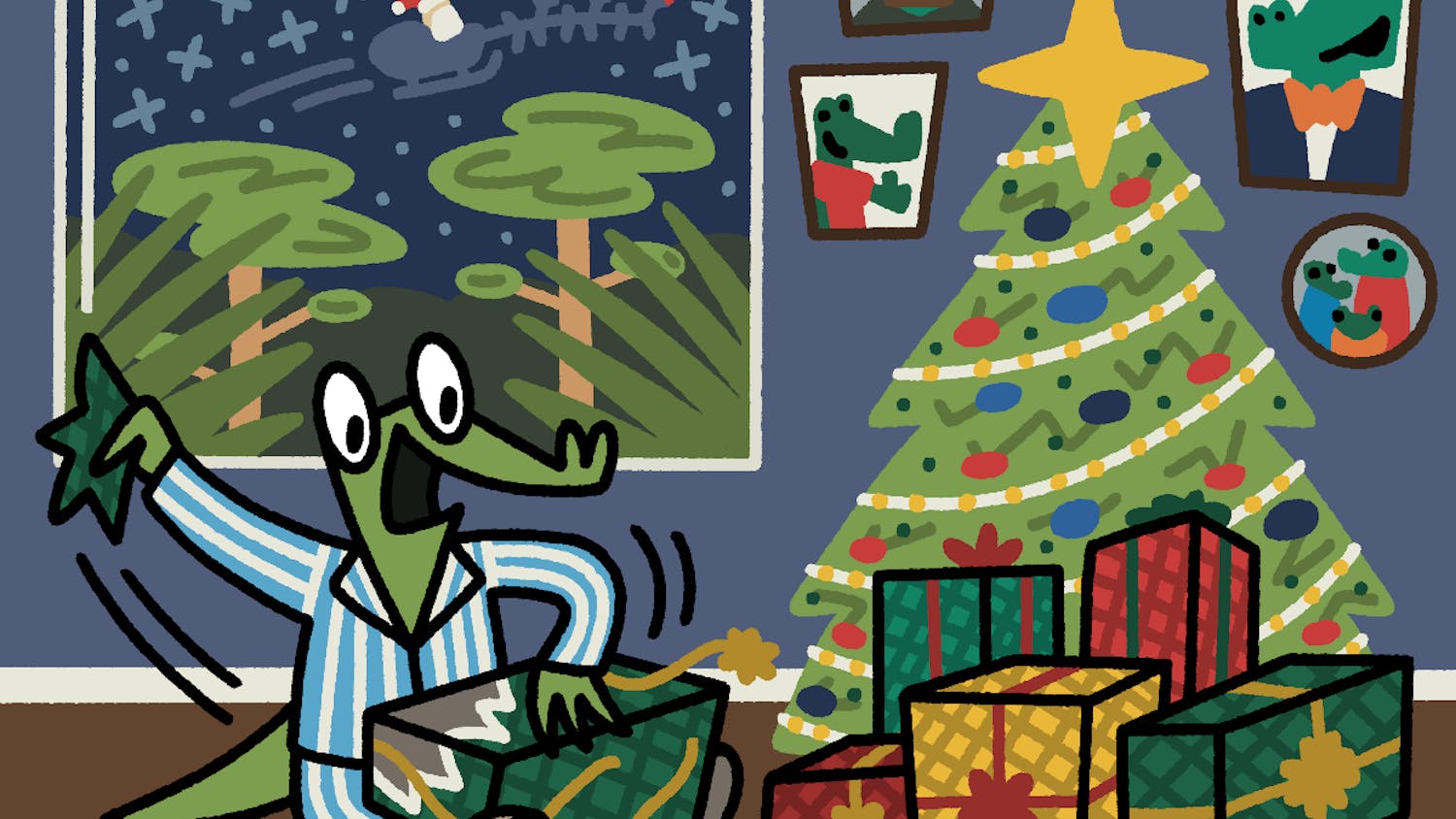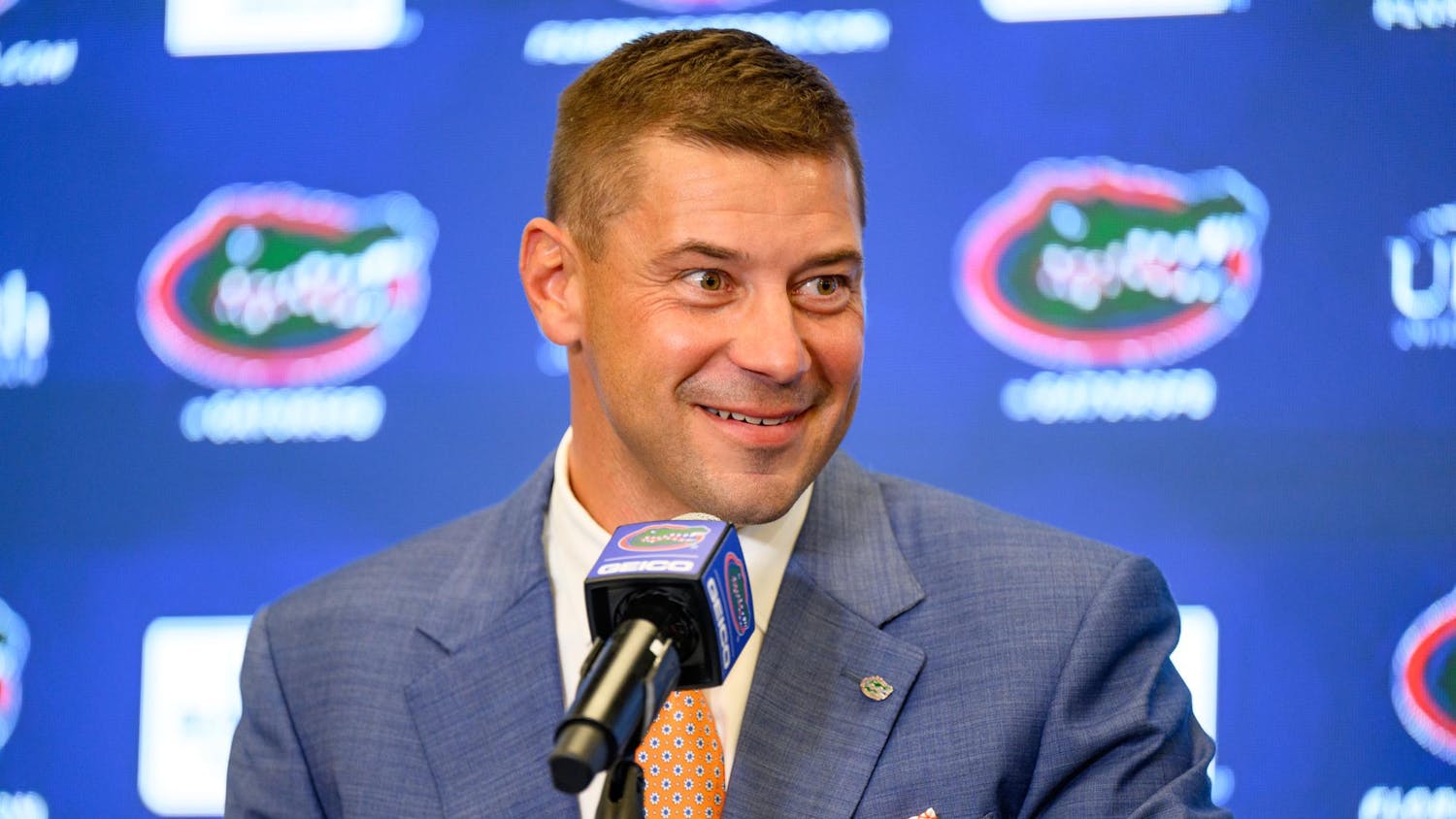At the Kanapaha Presbyterian Church Cemetery, the oak trees are nearly as old as the people buried there.
Yet, despite their age, many grave markers had fresh flowers sitting next to them — a subtle reminder that they are not forgotten.
At least 40 people visited and toured the church cemetery on Sunday from 1 p.m. to 4 p.m. They were able to view the nearly 32 unmarked burials. These self-guided tours were held in honor of All Saints Day, which is on Nov. 1. Members of the church would read aloud the names of those who had died since the last All Saints Day.
Kaley Behl, 46, spent her Sunday afternoon standing near the grave of Zacharias T. Taylor, her third great grandfather. Behl has five relatives buried in the church cemetery. Her family, the Taylors, moved to Florida from South Carolina in 1877.
As a cemetery elder through the church located at 6221 SW 75th Terrace, Behl is able to actively preserve the history of the Taylors. When the Boy Scouts came to the cemetery in the 1990s to survey the land, Behl was informed that three of her relatives had unmarked graves. With the help of the church, Behl raised enough money to purchase markers for three of her relatives.
“The living have to take care of the dead, so to speak,” Behl said.
Karen Kirkman, another cemetery elder through the church, worked alongside Behl to organize the event.
“To me, there’s nothing that sets my mind right as walking through a cemetery and contemplating the people who have gone before us,” Kirkman said. “Sometimes you never know when you’re looking at a marker for somebody who died in the 1800s. You may be the first person who’s said that name in 100 years.”
Eric Estling, 31, visited the cemetery for the tour Sunday. Estling, who lives right down the street from the church’s cemetery in an old sharecropper house, appreciated the informational poster boards crafted by Behl and Kirkman.
“Being able to see everybody’s face is really impactful,” Estling said.
Visitors touring the cemetery were able to contemplate themselves at the marker of John Haile, who is one of the oldest and most well-known burials in the cemetery. John and the rest of the Haile family were founding members of the original 1859 presbyterian church. Now, with the 1859 church no longer standing, current members of the church worship in the 1886 building, located further west.
However, the cemetery was not originally reserved for members of the church.
“We have some Catholics and some Baptists and some people with no affiliation,” Behl said.
Now, the cemetery requires that new burials must be either members of the church or those, like Behl, who already have family buried there.
Through ground penetrating research technology done about eight years ago, Behl and Kirkman were able to examine six feet below the ground to determine if any other Hailes are buried in the cemetery.
“Serena Haile, in her diary, talks about people being buried there,” Kirkman said. “And today, there’s no headstone. So, we know there’s more people buried there than what it appears.”
Besides researching the Hailes, Kirkman also works to document the legacy of African American cemeteries.
In 1850, approximately 35% of Alachua County was enslaved. As plantation farmers started to drift to Florida in search of fertile soil and cheap land, that number jumped to about 54% in 1860, Kirkman said.
Due to illegal deed restrictions, the church cemetery used to be deeded for whites only.
Bennet Kelly, who was enslaved by the Hailes, is the only African American burial there today.
Kelly died in 1933 and Kirkman believes he is buried next to his second wife, Daphne.
“So, my theory was that she is buried beside him, but because she died only a few weeks after he did that this was a fresh grave, and they didn’t want to dig one that close to a fresh burial,” Kirkman said. “That’s simply a theory, we’ll never be able to prove it one way or the other.”
Allyssa Keller is a contributing writer at The Alligator.
Allyssa Keller is a third-year journalism major who reports for the Avenue. On a typical day, you can find her at Starbucks, fueling her caffeine addiction.






